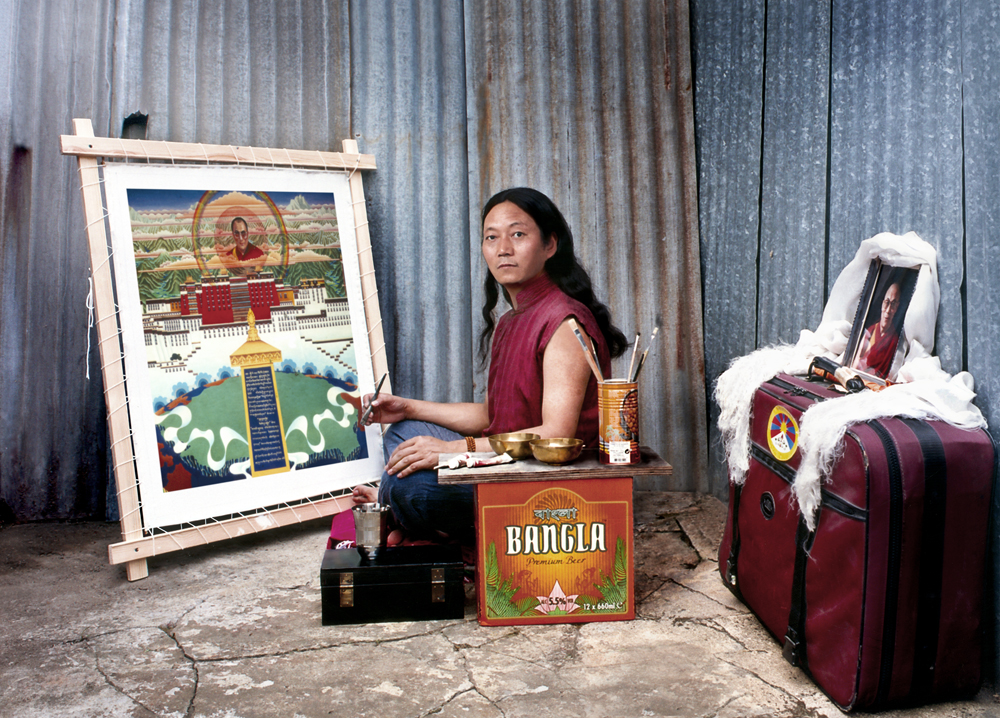Tibetan sources:
b s Ta n p a r a b b r t a n. 2007. Bod kyi srol rgyun mdzes rtsal las bris ’bur gnyis kyi byung ba mdo tsam brjod pa. Pe cin.
b r Ts o n ’g r u s r a b r g y a s a n d r D o r j e r i n c h e n. 2001. Bod kyi ri mo spyi’i rnam gzhag blo gsal ’jug sgo. Pe cin.
Other sources:
A l l i n g e r E. 2007. Representations of the Twenty-eight Buddhas of Former Aeons. In Bagan. G. Bhattacharya, G.J.R. Mevissen, M.M.S. Sinha (eds), KALHĀR Studies in Art, Iconography, Architecture and Archaeology of India and Bangladesh. Professor Enamul Haque Felicitation Volume. New Delhi,
73–80.
C u t t i n g S. C. 1937. A Photograph of Tsering Döndrup. Lhasa. http://tibetanmaterialhistory.wikischolars. columbia.edu/file/view/bob1-3.jpg/100489381/bob1-3.jpg. Access: 10.12.2017.
C u t t i n g S. C. 1947. The Fire Ox and Other Years. London.
G o n k a r G y a t s o. 2003. No Man’s Land: Real and Imaginary Tibet: The Experience of an Exiled Tibetan Artist. The Tibet Journal 28 (1/2, Spring & Summer).
G o n k a r G y a t s o. 2009. Buddha in Modern Times. In Tibetan Arts in Transition: A Journey through Theatre, Cinema and Painting. Seminars Proceedings. Rome and Naples.
G o n k a r G y a t s o. 2009. Gonkar Gyatso, Venice Biennale 2009. London.
G o n k a r G y a t s o. http://gonkargyatso.com/about-the-artist/artist’s-bio. Access 10.10.2017.
H a r r i s C. 1997. Struggling with Shangri-La: The Works of Gongkar Gyatso. In Frank Korom (ed.), Constructing Tibetan Culture: Contemporary Perspectives. Montreal.
H a r r i s C. 2012. The Museum on the Roof of the World. Chicago and London.
H e n s s M. 2014. The Cultural Monuments of Tibet. Prestel, Munich, London, New York.
J a c k s o n D. and J a c k s o n J. 1984. Tibetan Thangka Painting: Methods and Materials. Ithaca, New York.
J a c k s o n D. 2012. The Place of Provenance: Regional Styles in Tibetan Painting. New York.
J am y a n g N o r b u. http://www.jamyangnorbu.com/blog/2014/10/27/a-cup-of-tea-and-a-slice-of-artplease/. Access 10.10.2017.
L i n r o t h e R. 2004. Paradise and Plumage: Chinese Connections in Tibetan Arhat Painting. New York, Chicago.
R e i l l y M. 2012. Gonkar Gyatso: “[A] product of occupied-Tibet”. In Gonkar Gyatso: Three Realms. Brisbane.
Re y n o l d s V. and He l l e r A. 1983. Catalogue of the Newark Museum Tibetan Collection. Volume I. New Jersey.
Re y n o l d s V. 1999. From the Sacred Realm: Treasures of Tibetan Art from The Newark Museum. Prestel, Munich, London, New York.
S c o g g i n T. V. 2007. Making Waves: The Rimo of Curating Contemporary Tibetan Art Through an Anthropological Lens. http://www.asianart.com/exhibitions/waves/rimo.html. Access 10.10.2017.
Google Scholar
